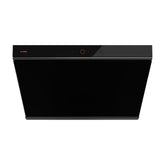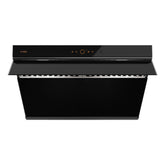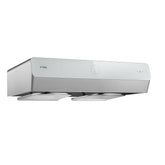Conventional Oven vs. Convection Oven: What’s the Difference?
Last Updated: 5/30/2025
Author: James Zhao, Sr. Tech Specialist & Alex Park, Product Specialist
Some swear by tradition, others seek innovation—when it comes to the conventional oven vs. convection oven debate, the right choice can completely transform the way you cook. Whether you're roasting a chicken or baking cookies, understanding how these ovens differ can help you elevate every dish.
In this guide, we’ll explain how conventional and convection ovens work, highlight their key differences, and break down the pros and cons of each. With guidance from FOTILE, you’ll be equipped to choose the best oven for your cooking style and kitchen.
If looking to upgrade your oven, FOTILE’s FreshBake electric ovens bring restaurant-quality results into your home kitchen. Enjoy precise temperature control, uniform heat distribution, and steam-assisted cooking that locks in moisture and enhances flavor. Shop our FreshBake ranges and elevate the way you cook.
How Does A Conventional Oven Work?
A conventional oven uses stationary heating elements—typically at the top and bottom—to create radiant heat. Since warm air rises naturally inside the oven, this can result in temperature inconsistencies and hot spots. This type of oven is best for recipes that need steady, undisturbed heat, such as casseroles, quick breads, or custards.
How Does A Convection Oven Work?
In contrast, a convection oven features a built-in fan and exhaust system that circulates hot air evenly throughout the oven cavity. This consistent airflow reduces hot spots, speeds up cook times, and enhances browning. It's especially useful for roasting meats, crisping vegetables, and baking multiple trays of cookies or pastries with even results.
Conventional Oven vs Convection Oven: Key Differences
From heating methods to cooking speed, here’s a side-by-side look at how a conventional oven and vs. convection oven compare:
Heating Methods
- Conventional ovens rely on radiant heat from fixed top and bottom elements. The heat rises naturally and may result in uneven temperatures between oven racks.
- Convection ovens use a fan to circulate air continuously, ensuring more uniform heat distribution across all levels.
Air Circulation & Temperature Consistency
- In conventional ovens, the lack of air movement often leads to uneven cooking, especially in the corners or on higher racks. This is why recipes often suggest rotating dishes midway.
- Convection ovens maintain a steady internal temperature, thanks to continuous airflow, reducing the risk of undercooked centers or overly browned edges.
Cooking Speed
- Convection ovens cook food up to 25% faster than conventional ovens, ideal for busy weeknights or large gatherings.
- Conventional ovens take longer to heat and cook, which can be beneficial for slow-cooked meals that need gradual temperature buildup.
Energy Efficiency
- Convection ovens are generally more energy-efficient, as they use lower temperatures and shorter cook times.
- Conventional ovens tend to use more energy, especially during long baking or roasting sessions.
Recipe Compatibility
- Conventional ovens are better for delicate recipes like cakes, soufflés, and flans that require still air for even rising.
- Convection ovens excel at roasting, browning, and batch baking. They're ideal for foods that benefit from even heat and crisp edges, like roasted veggies or sheet-pan dinners.
Pros and Cons of Convection Ovens
Convection ovens offer more control, faster cook times, and consistent results thanks to their built-in fan system. They’re a favorite among home cooks who like to roast, crisp, or bake in batches.
Pros:
- Faster, more even cooking results
- Great for roasting, browning, and multi-rack baking
- Saves energy by reducing cook time and temperature
- Enhances caramelization and crisping
Cons:
- Can dry out food if not monitored carefully
- Not recommended for delicate recipes that require still air
- May require adjustments to cooking temperature and time
- Learning curve if switching from a conventional setup
Pros and Cons of Conventional Ovens
Conventional ovens are a household staple, favored for their simplicity and predictable performance.
Pros:
- Great for delicate baking like cakes, custards, and soufflés
- Consistent with traditional recipe instructions
- Widely available in most kitchens
- No need to adjust cooking times or temperatures
Cons:
- Uneven heat distribution can result in inconsistent results
- Slower cooking compared to convection
- Often requires dish rotation for even doneness
- Less energy-efficient over extended cook times
Tips for Cooking in A Conventional Oven vs. A Convection Oven
Knowing how to work with your oven’s strengths can make a big difference in your results. Here are a few practical tips to help you get the best out of each oven type.
Tips for Cooking in a Convection Oven:
- Lower the recipe temperature by about 25°F
- Start checking for doneness a few minutes early
- Use shallow or rimless pans to let hot air circulate freely
- Perfect for batch baking or roasting on multiple racks
- Avoid covering dishes with foil unless required—airflow is key
Tips for Cooking in a Conventional Oven:
- Use the center rack for the most even heating
- Rotate pans midway through baking to prevent uneven browning
- Always preheat fully before cooking
- Avoid overcrowding to promote natural air circulation
- Choose recipes designed specifically for traditional ovens
Elevate Every Dish with FOTILE’s Electric Range
FOTILE’s FreshBake electric range takes the guesswork out of cooking with precise temperature control, built-in convection, and steam-assisted baking that locks in flavor and moisture. Whether you're roasting a chicken to perfection or baking a soft, chewy loaf of bread, every dish comes out just right.
Shop our FreshBake electric ranges and get the upgrade your kitchen deserves.
- Choosing a selection results in a full page refresh.






